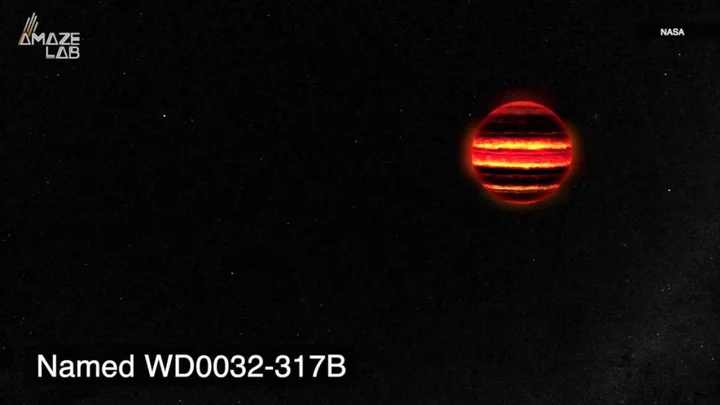
Astronomers have just discovered the most dazzling planet in the universe
Astronomers have just found out what planet in the universe is most dazzling and it is probably one you have never heard of. Looking at how much planet's clouds reflect sunlight back into space, astronomers have found a planet called exoplanet LTT9779b which reflects 80 per cent of the starlight it receives, making it the shiniest known planet in the universe. LTT9779b is slightly heavier and slightly larger than Neptune, and it is reflective because of the metallic glassy clouds that make up its atmosphere. Sign up to our free Indy100 weekly newsletter “Imagine a burning world, close to its star, with heavy clouds of metals floating aloft, raining down titanium droplets,” co-author James Jenkins, an astronomer at Diego Portales University and CATA (Santiago, Chile), said in a statement. Vivien Parmentier, a researcher at the Observatory of Côte d’Azur (France) and co-author of the study added: "LTT9779 b can form metallic clouds despite being so hot because the atmosphere is oversaturated with silicate and metal vapours.” So there you have it. Shame it doesn't have a very catchy name. Have your say in our news democracy. Click the upvote icon at the top of the page to help raise this article through the indy100 rankings.
2023-07-11 18:55

What Is a Heat Dome?
Heat domes are masses of hot air trapped within the atmosphere by high pressure. And they're becoming more common, thanks to climate change.
2023-07-11 00:23

Slow-Moving Storm Puts NYC, East Coast Under Flood Threat
New York City and the eastern US braced Sunday for severe thunderstorms as a creeping weather front drags
2023-07-10 02:59
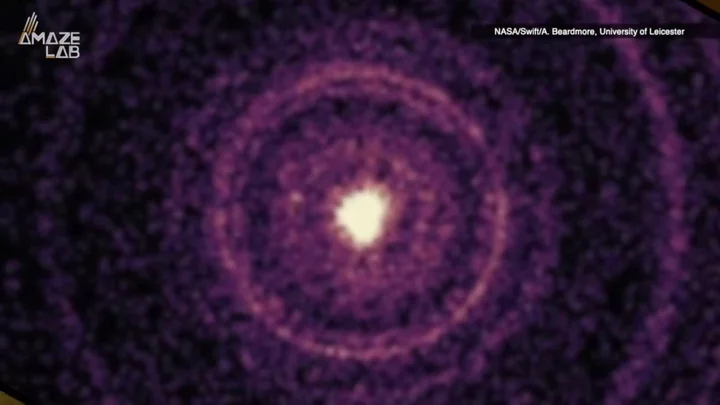
Scientists capture the moment a black hole 'turns on'
Astronomers have spotted the moment a black hole "turned on". While looking for the collision of a neutron star with another object, which should result in a kilonova (an explosion which reddens then fades over time), they stumbled upon an event which remained extremely bright. They soon worked out this light was because of supermassive black hole called J221951-484240 which had been on for around 10 months. But then they had to work out what had caused it, and got stuck between two causes, “J221951 is consistent with being nuclear, so the scenarios we are being left are a tidal disruption event or an active galactic nucleus,” lead author Dr Samantha Oates said as she presented the research at the National Astronomy Meeting 2023. “Looking at the spectrum it's consistent with both categories.” Sign up to our free Indy100 weekly newsletter A tidal disruption event (TDE) takes place when a star or a gas cloud gets too close to a supermassive black hole. The material is ripped apart, and begins to shine as the black hole feeds Alternatively, it could be an active galactic nucleus (AGN), the phase of a supermassive black hole where it is consistently feeding in a frenzy. “We hope in future to distinguish between these two scenarios,” Dr Oates concluded. Have your say in our news democracy. Click the upvote icon at the top of the page to help raise this article through the indy100 rankings.
2023-07-06 20:16

Horizon research deal with EU awaits Sunak's signature
BBC News understands a deal has been negotiated over UK association with the Horizon programme.
2023-07-06 08:45
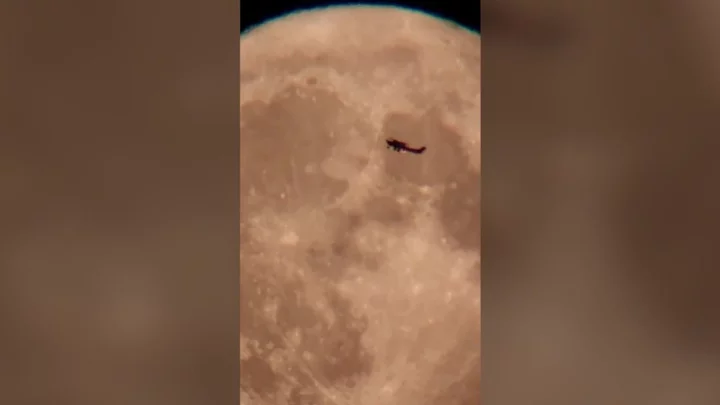
Supermoon completely dwarfs plane as it flies through Oregon skies in spectacular clip
July's Buck supermoon could be seen around the world lighting up the skies at the start of this week, but incredible new footage is showing the sheer scale of the phenomenon. A plane flying over the skies of Oregon is going viral after being filmed getting completely eclipsed by the moment. In the footage of the giant moon, the tiny plane goes flying past, and looks absolutely minuscule in comparison to the planet. Click here to sign up for our newsletters
2023-07-05 17:55

South Korea Salvages North’s Satellite in Intelligence Win
South Korea salvaged a failed North Korean spy satellite from the sea, giving it a rare direct look
2023-07-05 14:46

Monday Was the Hottest Day Ever as Global Temperatures Rise
Global temperatures hit a record on Monday, underscoring the dangers of ever-increasing greenhouse gas emissions generated from burning
2023-07-05 09:22
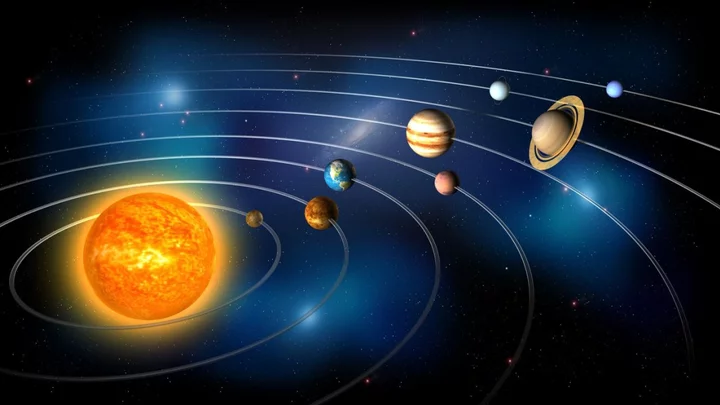
Scientists discover secret planet hiding in our solar system
There are eight planets in our solar system – plus poor old Pluto, which was demoted in 2006 – but what if there were more? Turns out that might be the case. Astronomers have calculated there is a 7 per cent chance that Earth has another neighbour hiding in the Oort cloud, a spherical region of ice chunks and rocks that is tens of thousands of times farther from the sun than we are. “It’s completely plausible for our solar system to have captured such an Oort cloud planet,” said Nathan Kaib, a co-author on the work and an astronomer at the Planetary Science Institute. Sign up to our free Indy100 weekly newsletter Hidden worlds like this are “a class of planets that should definitely exist but have received relatively little attention” until now, he said.. If a planet is hiding in the Oort cloud, it’s almost certainly an ice giant. Large planets like Jupiter and Saturn are generally born as twins. They have huge gravitational pulls of their own, however, and sometimes destabilise one another. That could have led to a planet to be nudged out of the solar system entirely – or exiled to its outer reaches, where the Oort cloud resides. “The survivor planets have eccentric orbits, which are like the scars from their violent pasts,” said lead author Sean Raymond, researcher at the University of Bordeaux’s Astrophysics Laboratory. That means that the Oort cloud planet could have a significantly elongated orbit, unlike the near-perfect circle Earth tracks around the sun. Trouble is, when things are that far away, they’re pretty difficult to spot. “It would be extremely hard to detect,” added Raymond. “If a Neptune-sized planet existed in our own Oort cloud, there’s a good chance that we wouldn’t have found it yet,” said Malena Rice, an astronomer at MIT not involved in this work. “Amazingly, it can sometimes be easier to spot planets hundreds of light-years away than those right in our own backyard.” Time to crack out the telescope. Have your say in our news democracy. Click the upvote icon at the top of the page to help raise this article through the indy100 rankings.
2023-07-04 23:16

Scientists discover that megaladon's went extinct because of themselves
Scientists believe they have discovered the cause of the megalodon's extinction – and no, it’s not Jason Statham. Experts have been conducting research on fossils of teeth from the biggest species of shark the world has ever seen, which went extinct around 3.6 million years ago and measured at least 15 metres long. Research published in the journal Proceedings of the National Academy of Sciences explains that the animal was actually partially warm-blooded. Unlike most cold-blood sharks, the body temperature is thought to have been around 27 degrees. The temperature is higher than the sea temperatures around the time. Sign up to our free Indy100 weekly newsletter Study co author Robert Eagle, who is professor of marine science and geobiology at UCLA, said [via CNN]: “We found that O. megalodon had body temperatures significantly elevated compared to other sharks, consistent with it having a degree of internal heat production as modern warm-blooded (endothermic) animals do.” They were able to prove that the animals were warm-blooded by analysing how carbon-13 and oxygen-18 isotopes were closely bonded together in the fossilised teeth. Senior study author Kenshu Shimada is a paleobiologist at DePaul University in Chicago, who said: “A large body promotes efficiency in prey capture with wider spatial coverage, but it requires a lot of energy to maintain. “We know that Megalodon had gigantic cutting teeth used for feeding on marine mammals, such as cetaceans and pinnipeds, based on the fossil record. The new study is consistent with the idea that the evolution of warm-bloodedness was a gateway for the gigantism in Megalodon to keep up with the high metabolic demand.” The fact it was warm-blooded means that regulating body temperature could have been the cause of its eventual demise. The Earth was cooling when the animal went extinct, which could have been a critical factor. “The fact that Megalodon disappeared suggests the likely vulnerability of being warm-blooded because warm-bloodedness requires constant food intake to sustain high metabolism,” Shimada said. “Possibly, there was a shift in the marine ecosystem due to the climatic cooling,” causing the sea level to drop, altering the habitats of the populations of the types of food megalodon fed on such as marine mammals and leading to its extinction. “One of the big implications for this work is that it highlights the vulnerability of large apex predators, such the modern great white shark, to climate change given similarities in their biology with megalodon,” said lead study author Michael Griffiths, professor of environmental science, geochemist and paleoclimatologist at William Paterson University. Have your say in our news democracy. Click the upvote icon at the top of the page to help raise this article through the indy100 rankings.
2023-07-04 21:49

UK Insurance Group Tells Members to Act on Biodiversity Loss
A British insurance group is pushing its members, which include Allianz SE, Aviva Plc and Chubb Ltd., to
2023-07-04 20:54
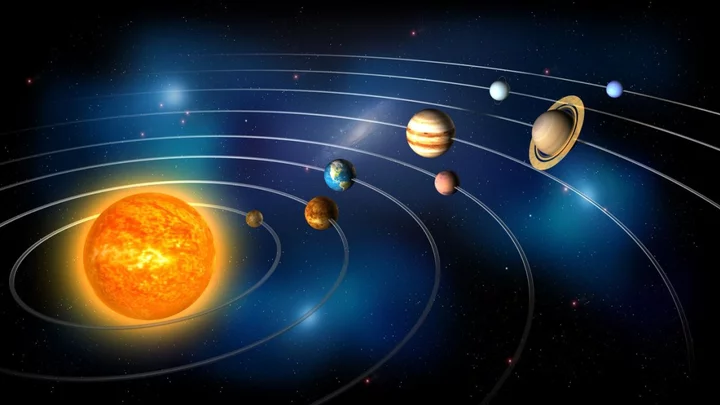
Scientists discover secret planet hidden in our solar system
There are eight planets in our solar system – plus poor old Pluto, which was demoted in 2006 – but what if there were more? Turns out that might be the case. Astronomers have calculated there is a 7 per cent chance that Earth has another neighbour hiding in the Oort cloud, a spherical region of ice chunks and rocks that is tens of thousands of times farther from the sun than we are. “It’s completely plausible for our solar system to have captured such an Oort cloud planet,” said Nathan Kaib, a co-author on the work and an astronomer at the Planetary Science Institute. Sign up to our free Indy100 weekly newsletter Hidden worlds like this are “a class of planets that should definitely exist but have received relatively little attention” until now, he said.. If a planet is hiding in the Oort cloud, it’s almost certainly an ice giant. Large planets like Jupiter and Saturn are generally born as twins. They have huge gravitational pulls of their own, however, and sometimes destabilise one another. That could have led to a planet to be nudged out of the solar system entirely – or exiled to its outer reaches, where the Oort cloud resides. “The survivor planets have eccentric orbits, which are like the scars from their violent pasts,” said lead author Sean Raymond, researcher at the University of Bordeaux’s Astrophysics Laboratory. That means that the Oort cloud planet could have a significantly elongated orbit, unlike the near-perfect circle Earth tracks around the sun. Trouble is, when things are that far away, they’re pretty difficult to spot. “It would be extremely hard to detect,” added Raymond. “If a Neptune-sized planet existed in our own Oort cloud, there’s a good chance that we wouldn’t have found it yet,” said Malena Rice, an astronomer at MIT not involved in this work. “Amazingly, it can sometimes be easier to spot planets hundreds of light-years away than those right in our own backyard.” Time to crack out the telescope. Have your say in our news democracy. Click the upvote icon at the top of the page to help raise this article through the indy100 rankings.
2023-06-30 15:26
